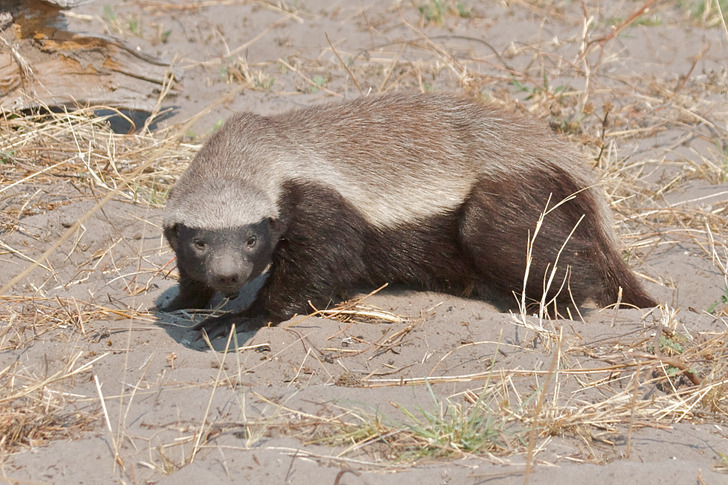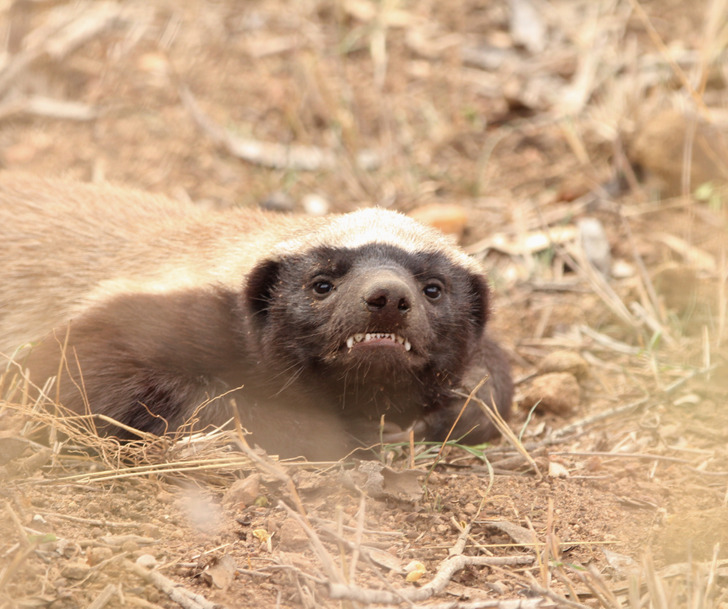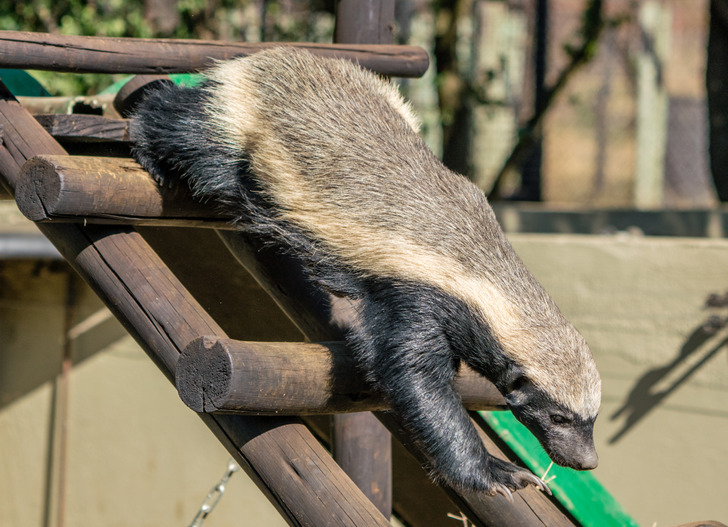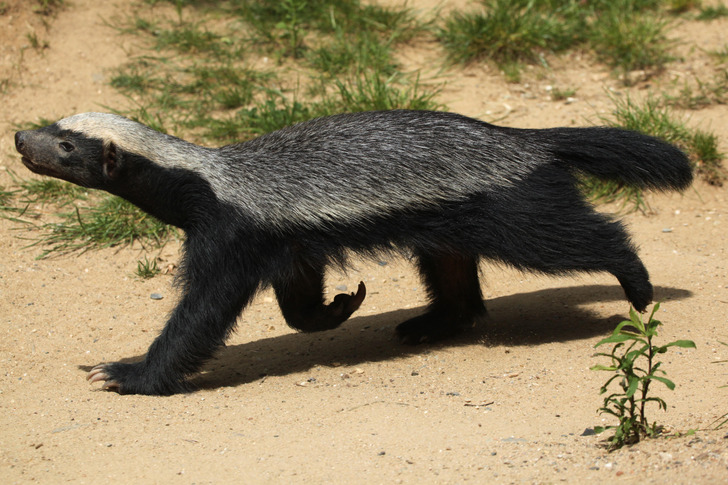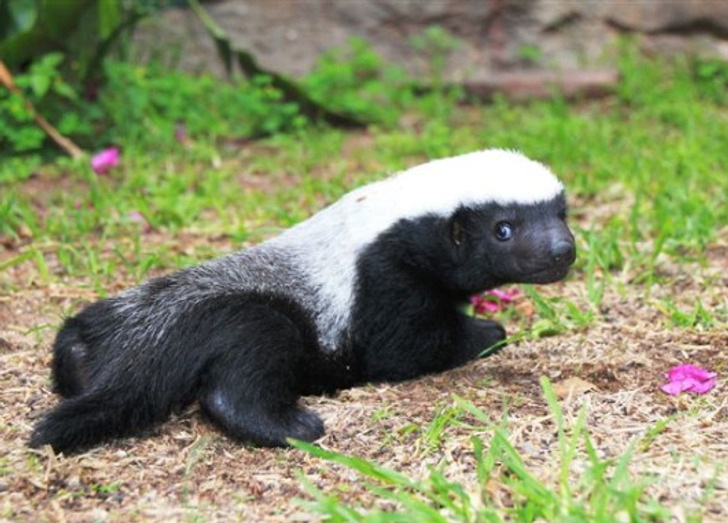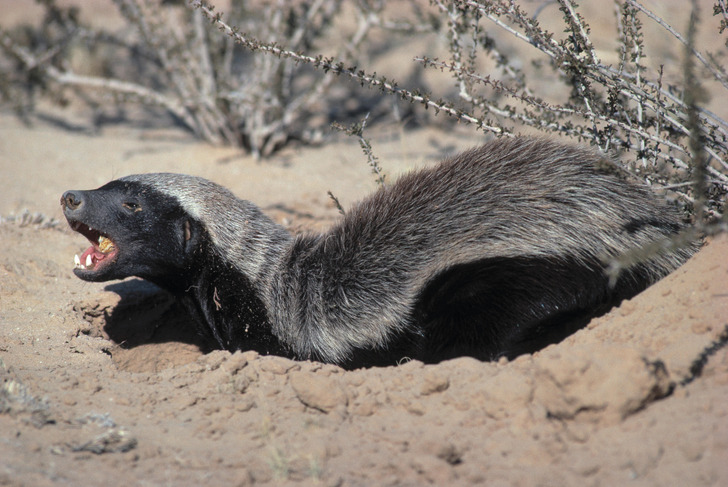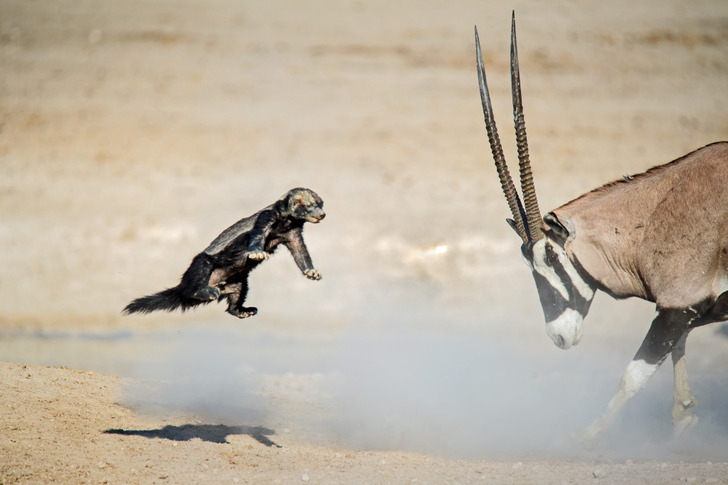These 7 Facts May Convince You That the Honey Badger Is the Most Badass Animal on Earth
Honey badgers may look cute, but it’s best not to get in their way. These small animals as big as small- to medium-sized dogs have earned a reputation as daredevils. It doesn’t cost them anything to engage in a fight with an animal several times its size or open a bolt to escape from a cage. Simply put, the honey badger is the Deadpool of the mammal world. Here are 7 facts that will prove these rebels know no barriers.
Their skin is incredibly thick.
In addition to their fearless temperament, nature has endowed honey badgers with protection in the form of very thick, loose skin. It is about 6 millimeters thick in the neck area, able to protect the animal’s organs and even allow it to turn around on its body axis and repel attackers. Bee stings, porcupine quills, and some animal bites can’t harm honey badgers’ necks.
They are born fighters.
Honey badgers have muscular bodies with short legs that make them extremely enduring and able to pursue their prey for a long time without any rest. They have 5 toes on each foot, equipped with sturdy claws of up to 1.5 inches (40 millimeters) long to fight predators and dig holes. Their teeth are sharp enough to break a tortoise’s shell.
Honey badgers can escape from anywhere.
Handlers of one of the African wildlife rehabilitation centers witnessed numerous escapes by a honey badger. The animal repeatedly left their open-air cage to attack a group of lions. This fearless creature opened the bolts and used 3 twigs, boulders, and piles of dirt to scale the fence. They also persuaded a neighboring female honey badger to help them open the gate.
They are immune to venom.
Honey badgers fearlessly attack venomous snakes and scorpions. They don’t stop, even when they get stung in their muzzles. Such a menu is likely to be dangerous or fatal to most mammals, but not to them. The honey badgers’ ability to withstand venomous bites lies in their thick skin and immunity of a special kind. They have genetic mutations that prevent the venom from seriously harming them, so they can hunt snakes and other poisonous animals almost carelessly.
They can plant stink “bombs.”
Honey badgers are related to skunks and have the ability to leave stinky surprises as their genetic relatives do. They use special glands under their tails to squirt disgusting-smelling liquid when threatened or frightened. The same substance is used to mark their territory. Those stink bombs may have a sedative effect on bees, allowing honey badgers to raid beehives freely.
Honey badgers aren’t actually interested in honey.
Honey badgers got their name because they often destroy bee hives. But it’s not exactly honey they love to eat. They may walk for miles and be stung repeatedly in order to treat themselves to some bee larvae. Besides bees’ babies, they may feed on a variety of living creatures, including the aforementioned snakes and scorpions, birds, small mammals, insects, and lizards. They use their claws to dig the prey out of holes.
They don’t hesitate to attack bigger animals.
Despite their reputation as tough and aggressive animals, honey badgers seldom attack bigger animals for no reason. They may rush at something that scared them. This often happens when the badgers are distracted by digging in the ground to catch prey. Their eyesight is poor and they may get so distracted by their hunt that they fail to notice a large predator. In such cases, honey badgers start chasing their assailants, making rattling noises and spraying stinky liquid from their anal glands.
The persistence of honey badgers can inspire anyone. What is your spirit animal?
